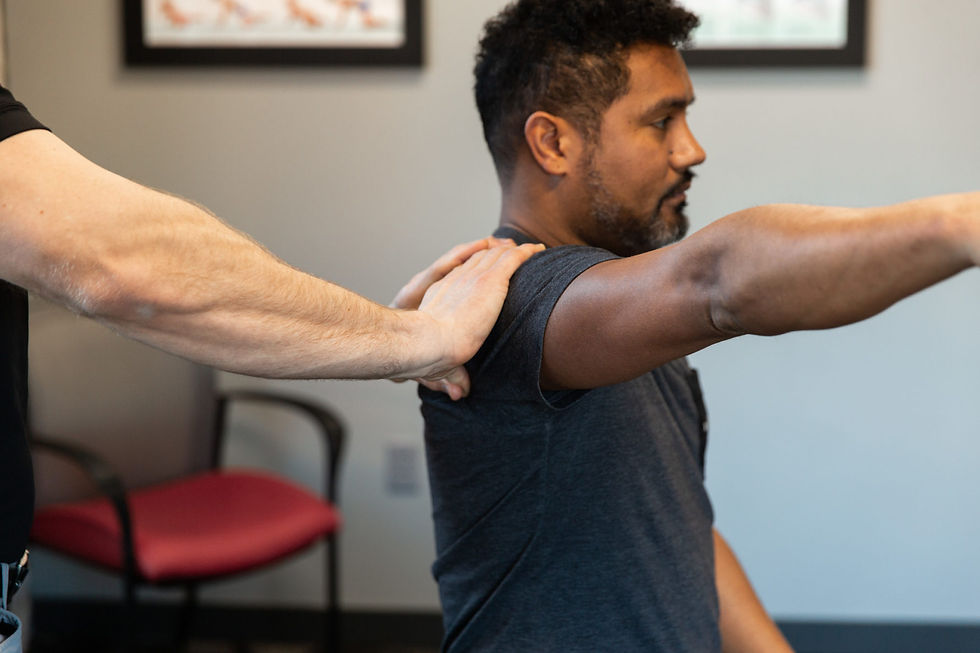The magic touch: how healthy is hei gung therapy actually?
- Timothy Wang
- 3 days ago
- 4 min read
Hei gung therapy — a blend of manual muscle work and targeted acupressure — is often seen as a relaxing treat. But as more families look for practical, drug-free ways to manage stress, pain, and everyday discomfort, this form of therapeutic touch is becoming a regular part of many households’ healthcare routines. So how beneficial is it really?
Many people use hands-on therapies to support general wellbeing, but “wellbeing” can mean different things for different people: less stress, better sleep, reduced pain, or simply functioning more comfortably day to day. That broad appeal makes hei gung therapy hard to study in narrow clinical terms, yet researchers and clinicians increasingly agree that it affects the body and mind in multiple, interconnected ways.
Practitioners describe its impact as holistic because it influences muscles, circulation, stress responses, sleep quality, and emotional regulation all at once. This combination may explain its growing use not just for individuals, but for families seeking healthier routines.

What are the physical benefits of hei gung therapy?
In many medical and rehabilitation settings, practitioners use massage therapy and acupressure to help patients cope with pain, tension, or recovery-related stress. One immediate benefit clients report is a renewed awareness of how their bodies actually feel — something easy to lose during busy, screen-filled lives.
The slow, repetitive pressure used in hei gung therapy activates the parasympathetic nervous system, the part of the body responsible for rest, recovery, and repair. In hospital programs and pilot studies, hands-on therapy has been shown to reduce pain intensity, ease muscle stiffness, and support better physical comfort during treatment.
Some research on hands-on bodywork suggests that regular sessions may help reduce chronic musculoskeletal pain, particularly in adults with long-standing back, shoulder, or neck tension. While researchers want more large-scale studies, existing evidence points to meaningful short-term improvements in pain and mobility.
Circulation is another area of interest. Studies on manual muscle therapy show that targeted pressure can increase local blood flow and help reduce post-exercise soreness — benefits that may apply across age groups.
Emotional benefits: subtle but significant
Even when the goal is physical relief, emotional benefits often emerge alongside it. It’s difficult to separate the two.
Hei gung therapy can prompt the release of endorphins, which help modulate both pain and mood. Supportive, consensual touch has also been linked to reduced anxiety and improved emotional resilience. Many people — especially children, older adults, and those under chronic stress — respond strongly to this type of nervous-system calming.
In studies involving people navigating chronic illness or fatigue, participants often reported feeling more grounded, more connected to their bodies, and better equipped to handle daily challenges after receiving touch-based care.
Who can hei gung therapy help?
Clinicians increasingly recommend therapeutic touch as part of whole-person care. Patients receiving structured touch therapy reported improvements in tension, stress, fatigue, and sleep.
The calming effect comes from how gentle pressure signals safety to the brain, helping regulate physiological stress responses. This makes it useful for a wide range of people, including adults:
managing chronic pain
experiencing stress or sensory overload
dealing with work pressure and posture-related tension
coping with stiffness or reduced mobility
anyone who spends long hours at a desk
people with limited access to healthy touch in daily life
Because tension and stress look different at every age, having a tool that adapts easily to different needs can be valuable for whole-family wellbeing.
How to integrate hei gung therapy into family routines
While professional sessions offer the most structured support, families can benefit from simple touch-based habits at home — gentle pressure on the shoulders, light acupressure on the hands or feet, or slow techniques to help unwind before bed.
Touch therapists often teach simple routines that partners can use to help each other de-stress after long days. None of these replace professional care, but they extend the benefits and promote healthier daily rhythms.
Some healthcare advocates argue that hands-on therapies deserve recognition as part of mainstream holistic care — especially for families looking to reduce overreliance on medication for stress, tension, or sleep issues. When framed this way, therapeutic touch becomes less of an occasional luxury and more of a practical, preventive tool.
Why whole-family holistic care matters
Families today face layered stressors: demanding work schedules, digital overload, limited movement, and chronic tension that begins earlier and lasts longer. Approaches like hei gung therapy support a holistic model of health that:
acknowledges physical and emotional wellbeing are connected
reduces stress
promotes healthier sleep and routines
encourages body awareness
supports recovery from daily strain
strengthens emotional connection through positive, supportive touch
When every family member benefits therapeutic touch becomes a shared health practice rather than an individual treat.
The bottom line
Hei gung therapy isn’t magic, and it doesn’t replace medical care. But current evidence and clinical experience show that it can play a meaningful role in modern holistic healthcare — improving comfort, reducing stress, supporting recovery, and helping people function better in everyday life.
For families looking to build healthier habits and reduce daily stress, hei gung therapy offers a simple, non-invasive tool that supports wellbeing across generations.
Give us a call/text for available times or book online at https://www.thebetterclinic.com/book-appointment
Follow Us on Facebook: www.facebook.com/betterbetterheigungtherapy and Instagram www.instagram.com/betterbetterheigungtherapy



Comments